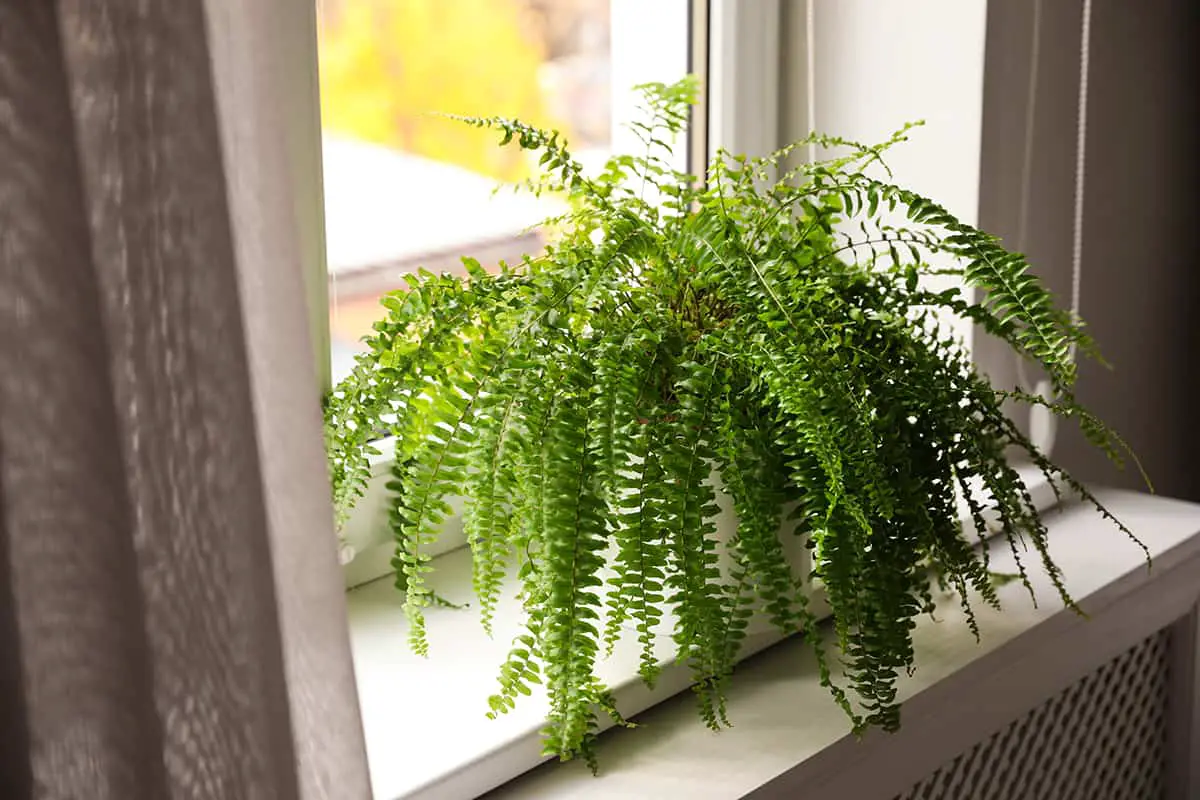Ferns are one of the oldest types of plants on the planet, with fern fossils dating back as far as 360 million years.
There is a huge range of ferns still alive today, growing in a variety of climates and habitats all over the world. Estimates indicate that there are between 10,000 and 15,000 different types of ferns. Here we take a closer look at some of the most popular ferns among gardeners.
Table of Contents
What are Fern Plants?
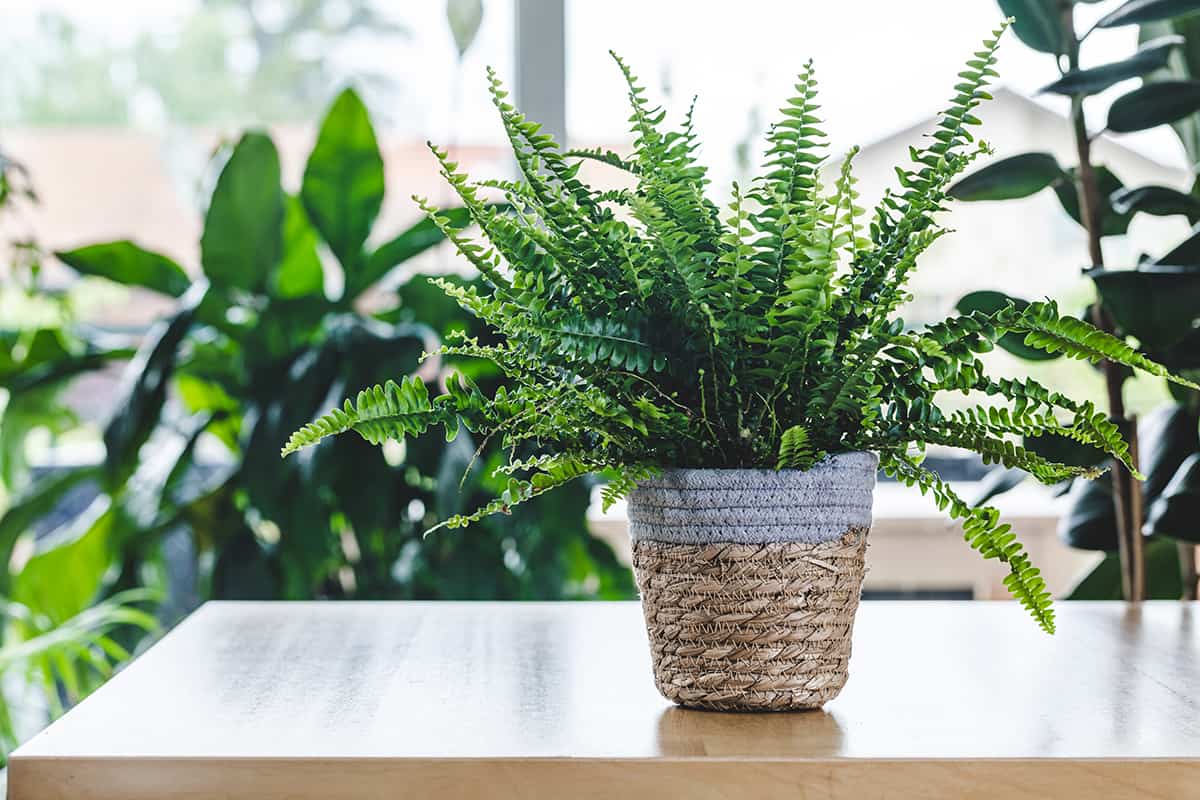
A fern plant is a type of plant that reproduces via spores. This means they have no flowers and, therefore no seeds. ‘Fern’ is the more common name for this group of plants, which is botanically known as ‘polypodiophyta’. Ferns do not belong to one specific genus or family of plants, and instead, they are defined by their vascular systems, reproducing pores, and complex leaves.
The leaves of a fern plant are referred to as ‘fronds’. These are a type of megaphyll, which means each leaf has a single vein and does not branch out. Ferns are best known for their feather-like foliage and the fact that they typically thrive in moist or wet soils and in shady conditions.
Varieties of Ferns:
Maidenhair Fern
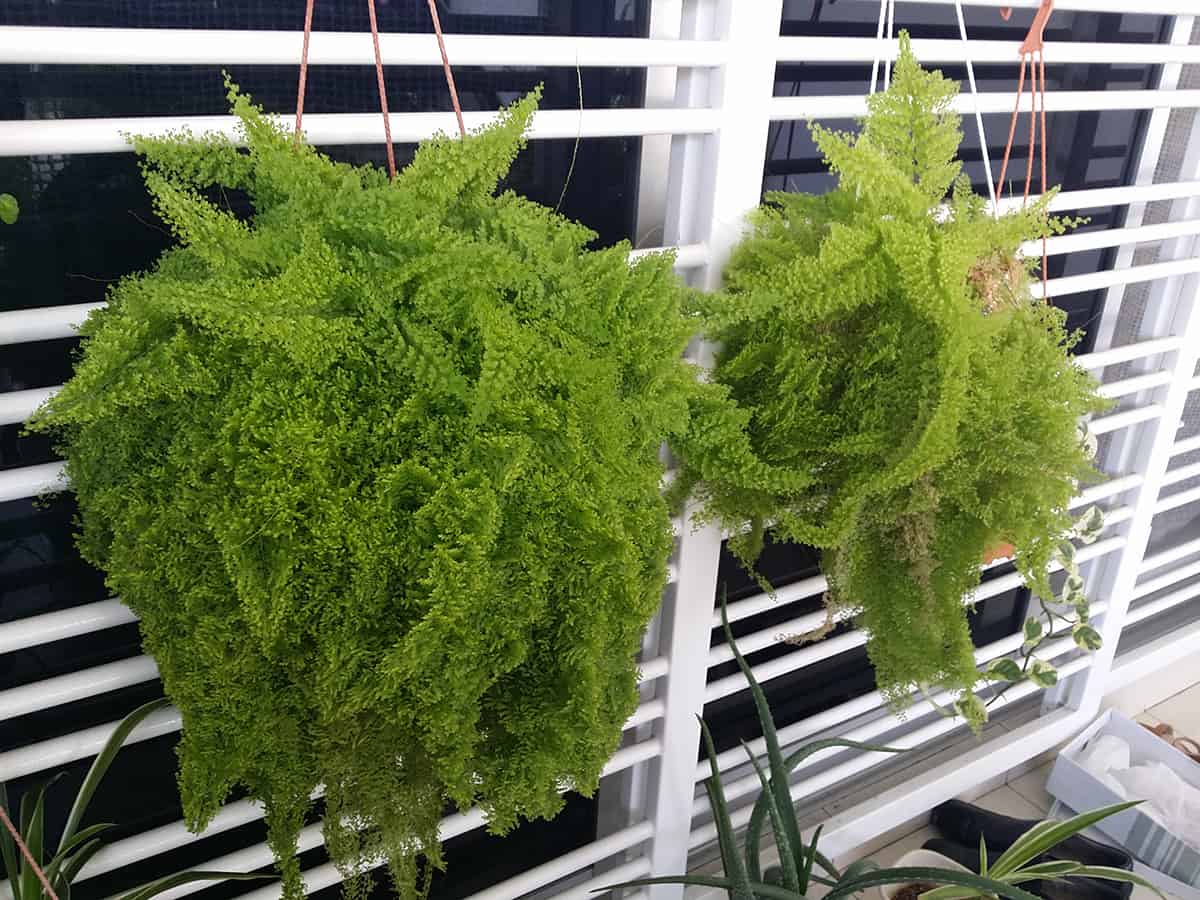
- Botanical name: Adiantum aleuticum
- Common names: Maidenhair Fern, Western Maidenhair Fern, Five-fingered Fern, Aleutian Maidenhair
- Plant family: Pteridaceae
- USDA hardiness zone: 3 – 8
- Mature height: 1 to 3 feet
- Mature spread: 1 to 3 feet
The Maidenhair Fern is native to North America, where it is found from Newfoundland in Canada through to Vermont in the US. The botanical name ‘aleuticum’ is a reference to the Aleutian Islands of Alaska, where the Maidenhair Fern is widespread. This is a deciduous, perennial plant that can become semi-evergreen in some climates. The foliage of the fern is bright green, with each frond unfurling from a tightly curled wiry stem.
The fronds will measure between 6 and 10 inches in length at maturity, and they will lay out horizontally on the plant when kept in the shade or will point vertically when grown in sunny conditions.
There are many different types of Maidenhair Fern that fall into the Adiantum genus. These include the Himalayan Maidenhair (Adiantum venustum), Northern Maidenhair Fern (Adiantum pedatum), and the Southern Maidenhair Fern (Adiantum capillus-veneris).
The Maidenhair Fern thrives in moist soils which are well-draining, and it prefers part to fully shaded positions but can tolerate full sun.
Giant Leather Fern
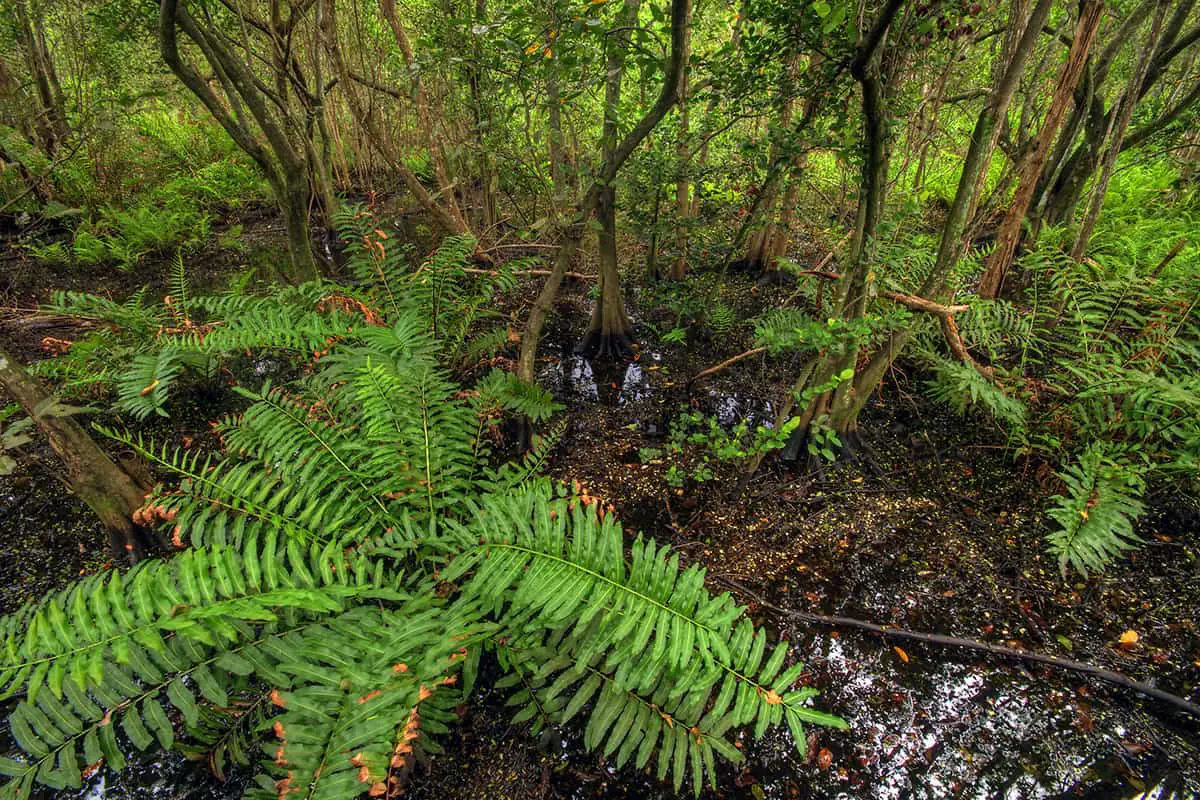
- Botanical name: Acrostichum danaeifolium
- Common names: Giant Leather Fern, Giant Fern
- Plant family: Pteridaceae
- USDA hardiness zone: 9 – 12
- Mature height: 6 – 12 feet
- Mature spread: 5 – 10 feet
The Giant Leather Fern is native to the United States, the Virgin Islands, and Puerto Rico. Within the US, the only state where the Giant Leather Fern occurs naturally in Florida, commonly growing in marshland, swamps, and river plains.
As the name suggests, this is a large plant with fronds that can reach up to 12 feet in length. The fronds are dark green with a paler green underside, and they take on a rusty red color when fertile due to the cinnamon-colored spore cases which coat the foliage.
Unlike many ferns, this type of fern thrives in partially sunny or full sun sites. It is ideal for coastal regions since it is not affected by saltwater spray or salty winds. It prefers moist or wet conditions and soils that do not drain efficiently.
Bird’s Nest Fern
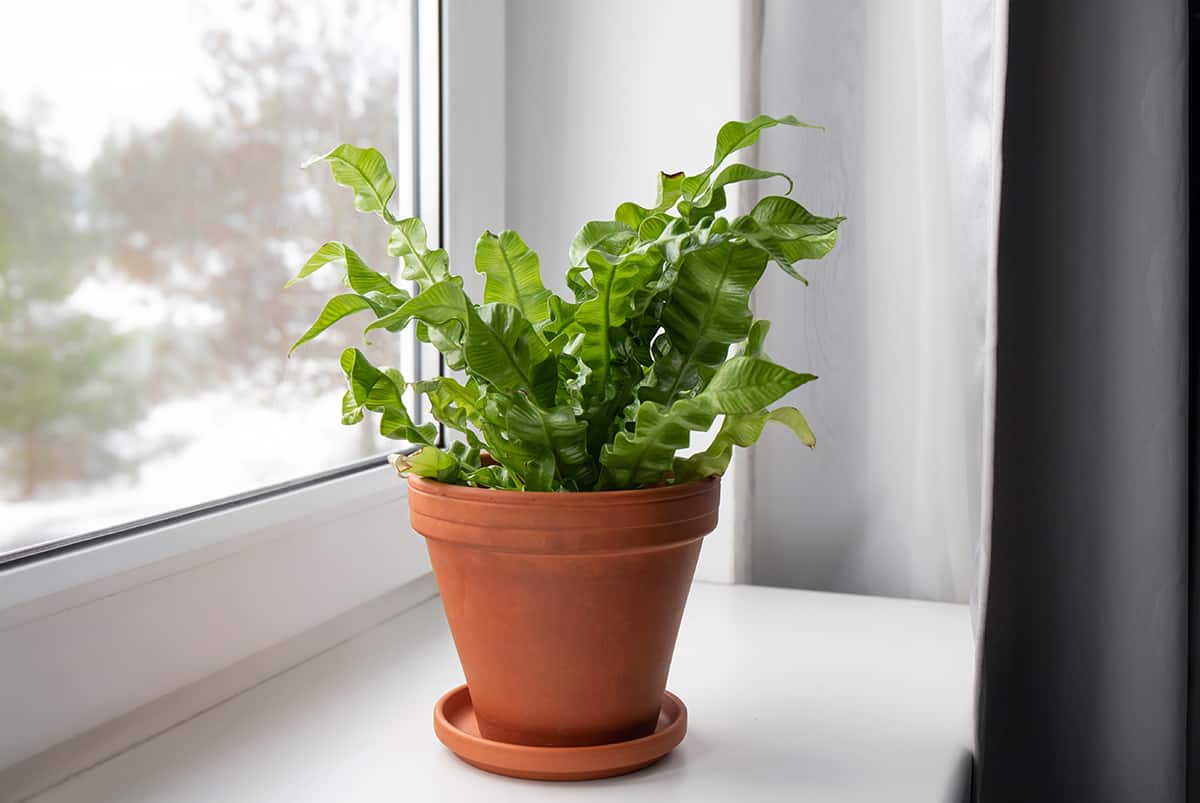
- Botanical name: Asplenium nidus
- Common names: Bird’s Nest Fern, Nest Fern,
- Plant family: Aspleniaceae
- USDA hardiness zone: 11 – 12
- Mature height: 3 – 5 feet
- Mature spread: 2 – 3 feet
The Bird’s Nest Fern is an evergreen plant that forms a rosette shape, with new leaves continually emerging from the center of the ‘nest’. It is an epiphyte, which means in the wild, it will attach itself to other plants and trees to grow on them instead of in the soil. The foliage of this fern is very striking, in a bright shade of green with a wax-like surface.
The edges of the leaves are wavy, which gives an overall ruffled effect. When grown outside, each leaf can span up to 5 feet in length, or when grown as a houseplant, the leaves typically don’t exceed 2 feet in length.
The Bird’s Nest fern requires hot temperatures since it is native to tropical Asia, eastern Australia, and Hawaii. It thrives in full or partial shade and moist, well-draining soils.
Hart’s Tongue Fern
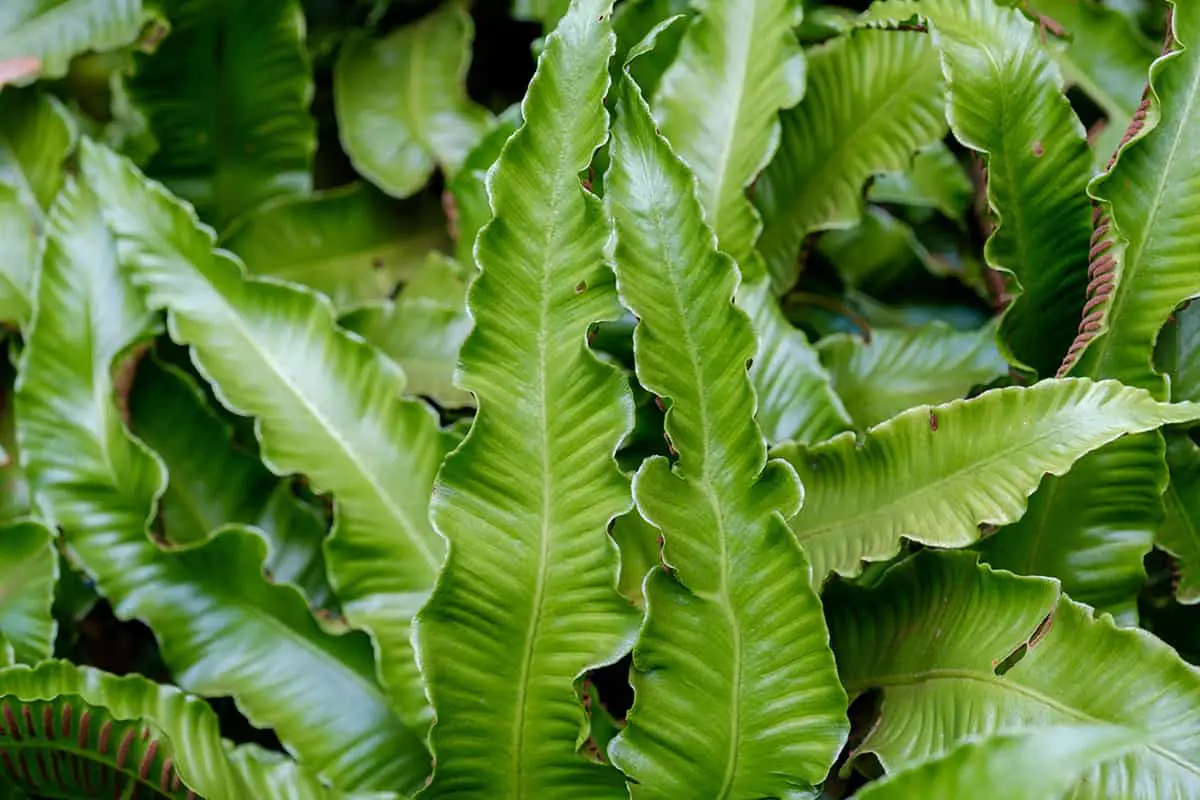
- Botanical name: Asplenium Scolopendrium
- Common names: Hart’s Tongue Fern, Horse Tongue,
- Plant family: Aspleniaceae
- USDA hardiness zone: 5 – 9
- Mature height: Up to 2 feet
- Mature spread: Up to 2 feet
This is a simple-looking evergreen fern that is native to the eastern United States and parts of Europe. It features strap-like leaves in bright green, which develop dark orange spores on the undersides to give a two-toned effect. The plant is quite hardy and will remain looking lush to bring color to woodlands or gardens through every season.
Hart’s Tongue Fern grows best in full or partial shade and should be kept in well-draining soil which is not allowed to dry out.
Lady Fern
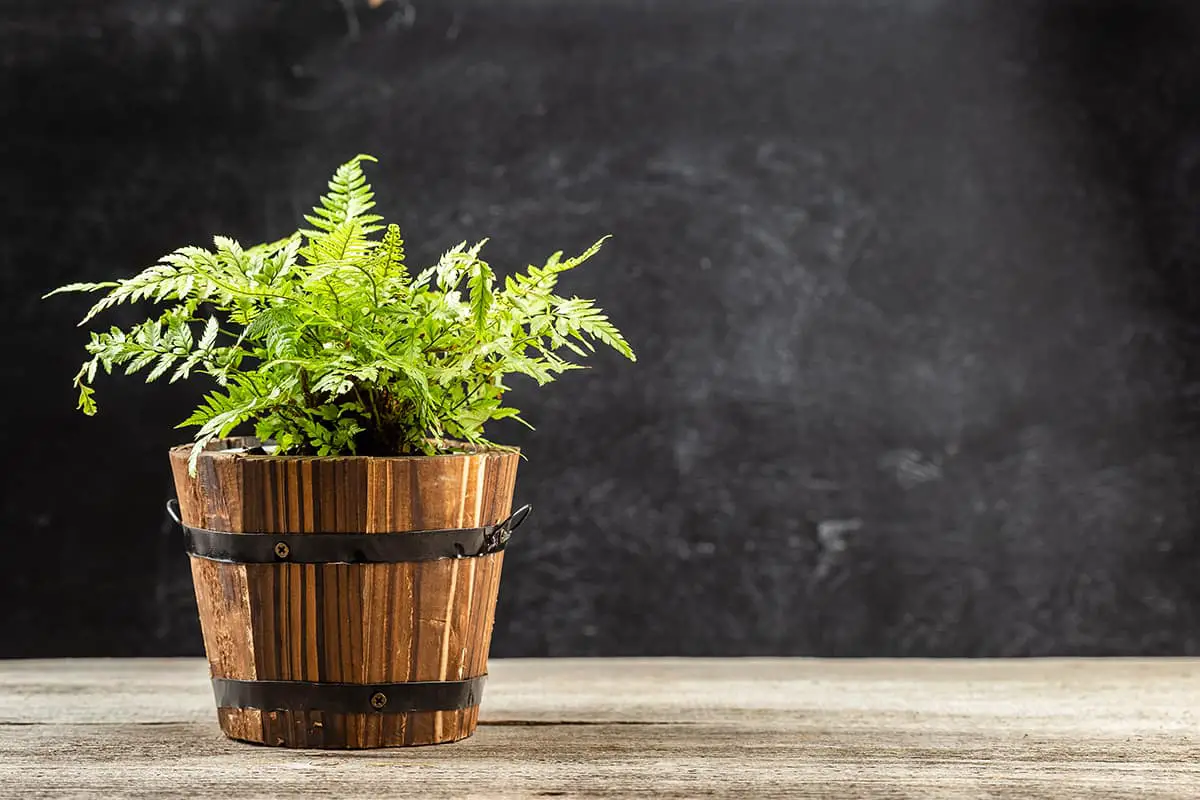
- Botanical name: Athyrium filix-femina
- Common names: Lady Fern, Common Lady Fern,
- Plant family: Athyriaceae
- USDA hardiness zone: 4 – 9
- Mature height: Up to 3 feet
- Mature spread: Up to 3 feet
Native to Europe, Asia, North Africa, and North America, this vigorous, deciduous fern is common in damp woodland locations around the world. It produces lacy fronds in medium green, which are typically associated with ferns.
The stems can be green or red. It is useful for filling gaps and creating lush foliage in shady areas since it thrives in full to partial shade. It prefers soils that are consistently moist. However, this fern is more tolerant of dry conditions than most other ferns.
Mosquito Fern

- Botanical name: Azolla filiculoides
- Common names: Mosquito Fern, Water Fern, Red Water Fern, American Water Fern, Fairy Moss
- Plant family: Salviniaceae
- USDA hardiness zone: 7 – 11
- Mature height: Up to 3 inches
- Mature spread: Up to 1 inch
The Mosquito Fern is a type of aquatic, free-floating plant. It features lobed leaves which sit on the surface of the water, and a series of slender roots which hang under the water to absorb nutrients. The fern is native to North and South America but has been introduced across much of the world, including Europe, Asia, Australia, New Zealand, and Africa. Each individual plant is very small, but they spread rapidly to completely cover the water surfaces of lakes and slow-moving rivers.
They are recommended for areas where mosquitoes are a nuisance because they cover the water to discourage mosquitoes from laying eggs. The leaves of this plant are green. However, they will turn red or pink as a reaction to too much sun or temperatures that are too cold.
Hard Fern

- Botanical name: Blechnum spicant
- Common names: Hard Fern, Deer Fern, Herringbone Fern, Snake Fern,
- Plant family: Blechnaceae
- USDA hardiness zone: 5 – 9
- Mature height: Up to 2 feet
- Mature spread: Up to 3 feet
This evergreen, low-growing fern grows in rosettes with unusual herringbone-shaped leaves, creating a lush and full-textured landscape.
The Hard Fern produces two types of leaves; infertile leaves which spread outwards, and fertile fronds, which stand vertically from the middle of the rosette. It grows best in full or partial shade and will tolerate some sun in cooler climates.
Rattlesnake Fern
- Botanical name: Botrychium virginianum
- Common names: Rattlesnake Fern, Common Grape Fern,
- Plant family: Ophioglossaceae
- USDA hardiness zone: 4 – 9
- Mature height: 1 to 4 feet
- Mature spread: Up to 1 foot
This is a deciduous fern that can reach up to 4 feet tall, but more commonly, it tops out at around 1 foot in height to create a low-growing mat of foliage. It is usually among the first of the ferns to produce fronds in early spring and is found growing across a wide range of climates and habitats.
It prefers light shade and moist, fertile soil with a good supply of fungus. The fronds of the Rattlesnake Fern are lacy and feathered, with a single sterile stem rising from the middle of the plant in bright green.
Coastal Wood Fern
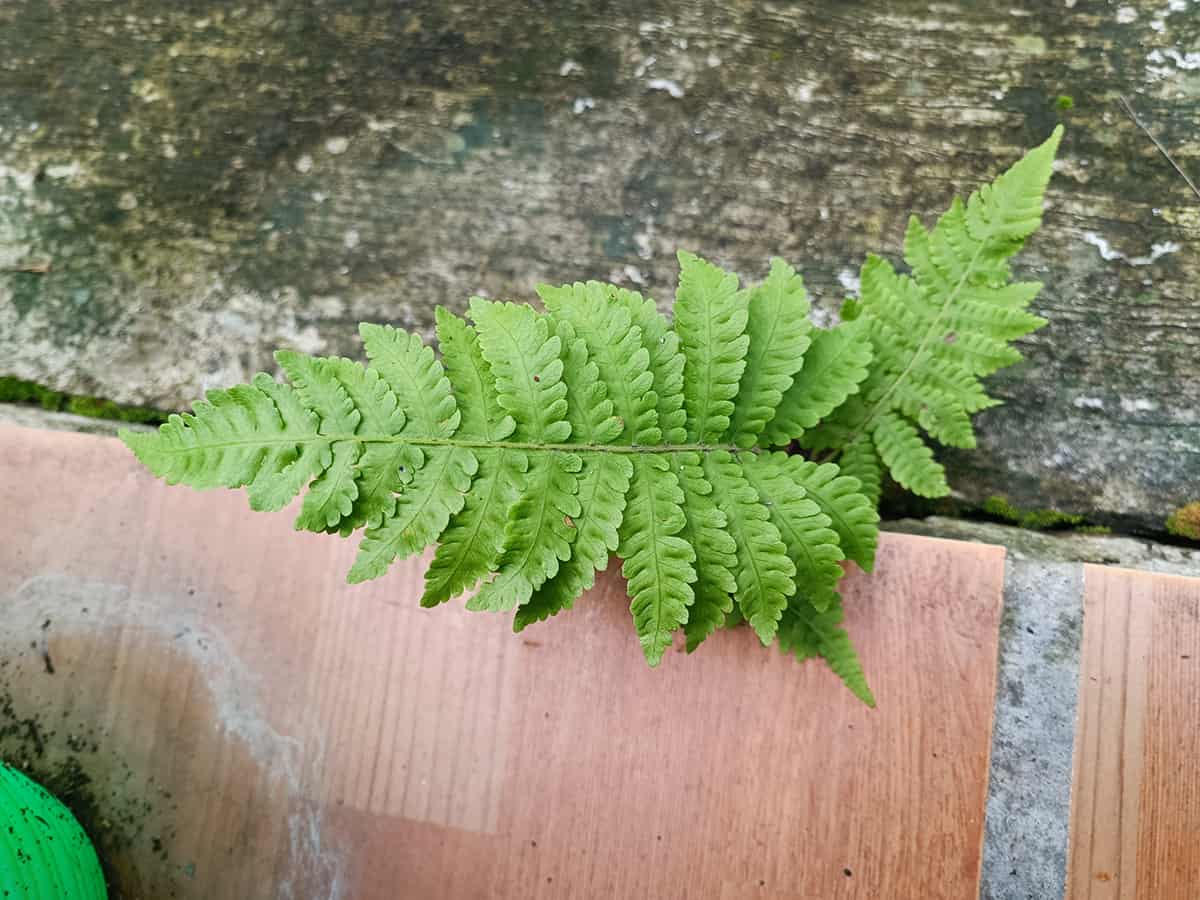
- Botanical name: Dryopteris arguta
- Common names: Coastal Wood Fern, California Wood Fern
- Plant family: Dryopteridaceae
- USDA hardiness zone: 7 – 9
- Mature height: 2 to 3 feet
- Mature spread: 2 to 3 feet
The Coastal Wood Fern is native to the west coast of North America, from California and Arizona in the US, up to British Columbia in Canada. It produces clusters of lacy fronds, which grow to form a vase-like shape.
It grows well in partial shade and full shade and, as a low-growing plant, is suitable for use as ground cover. Unlike many ferns, the Coastal Wood Fern can adapt to dry soils, though it will perform best in moist, well-draining soils.
Autumn Fern
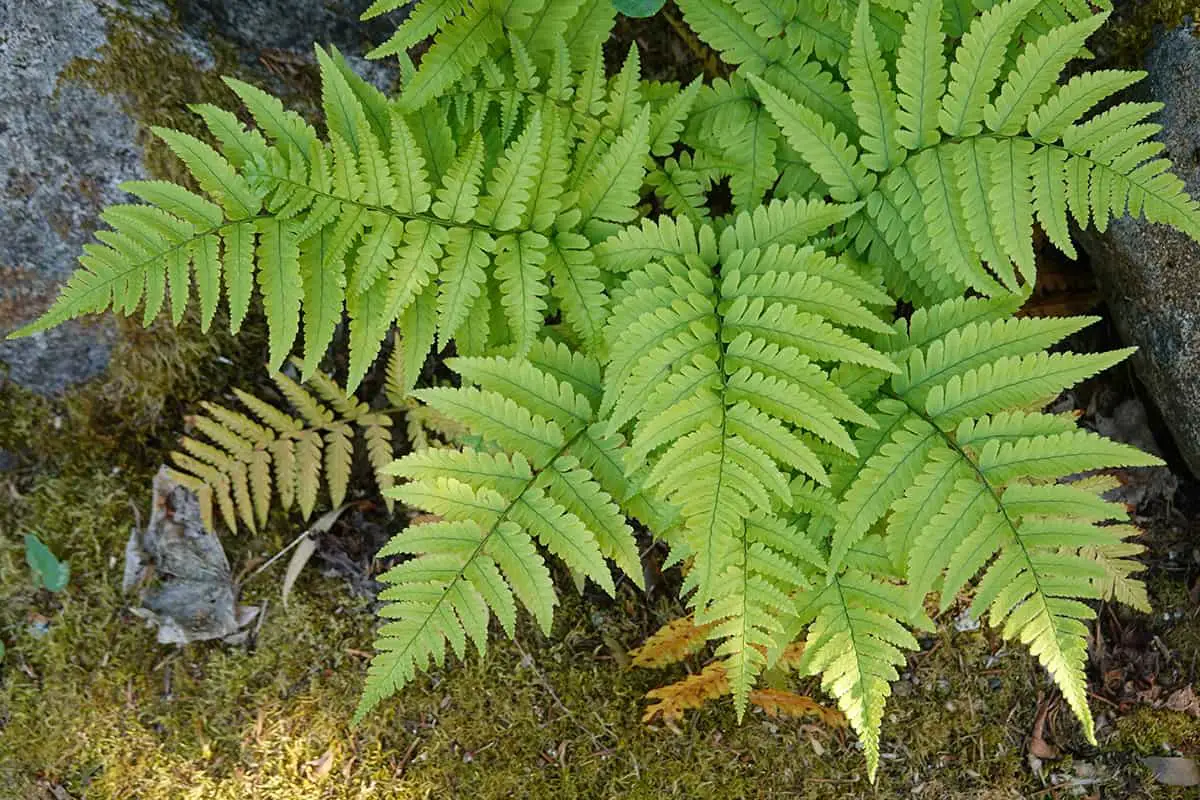
- Botanical name: Dryopteris erythrosora
- Common names: Autumn Fern, Japanese Shield Fern, Copper Shield Fern, Red Shield Fern
- Plant family: Dryopteridaceae
- USDA hardiness zone: 5 – 9
- Mature height: 1 to 2 feet
- Mature spread: 1 to 2 feet
This semi-evergreen fern is native to East Asia. It produces clumps of fronds that are loosely triangular in shape which can span up to 28 inches in length and 20 inches across. When young, the fronds have a vivid copper color, which develops into bright green as they mature.
On plants with both new and old leaves, this achieves a nicely contrasting two-toned effect. The Autumn Fern thrives in partially shaded or fully shaded conditions, though it can tolerate a sunny spot when the soil is consistently moist.
Ostrich Fern
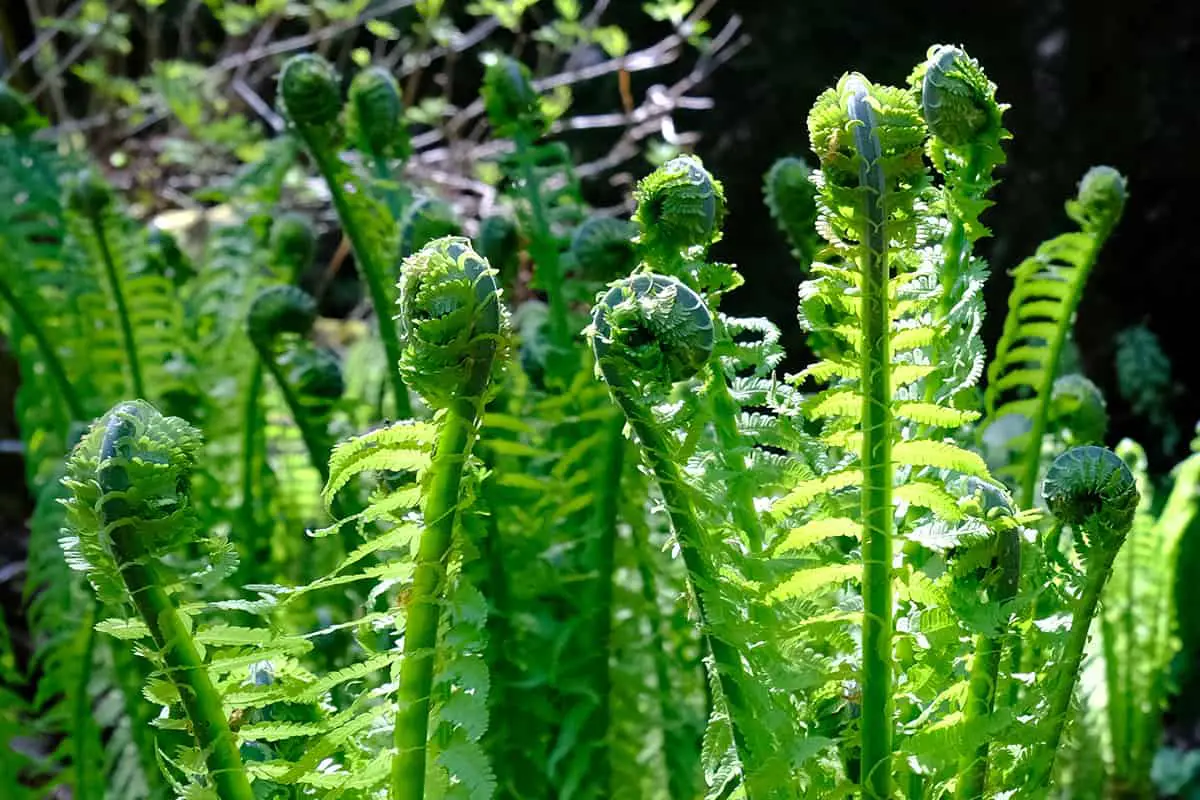
- Botanical name: Matteuccia struthiopteris
- Common names: Ostrich Fern, Ostrich Feather Fern, Shuttlecock Fern
- Plant family: Onocleaceae
- USDA hardiness zone: 3 – 7
- Mature height: 4 to 6 feet
- Mature spread: 3 to 4 feet
The Ostrich Fern is a deciduous plant with tall green fronds which stand upright or arc over gently. This fern is named after the similarity between the large feathers of an ostrich and the large feathery fronds of the plant. It fares best in boggy conditions where the soil does not dry out and in partial or full shade.
Boston Fern
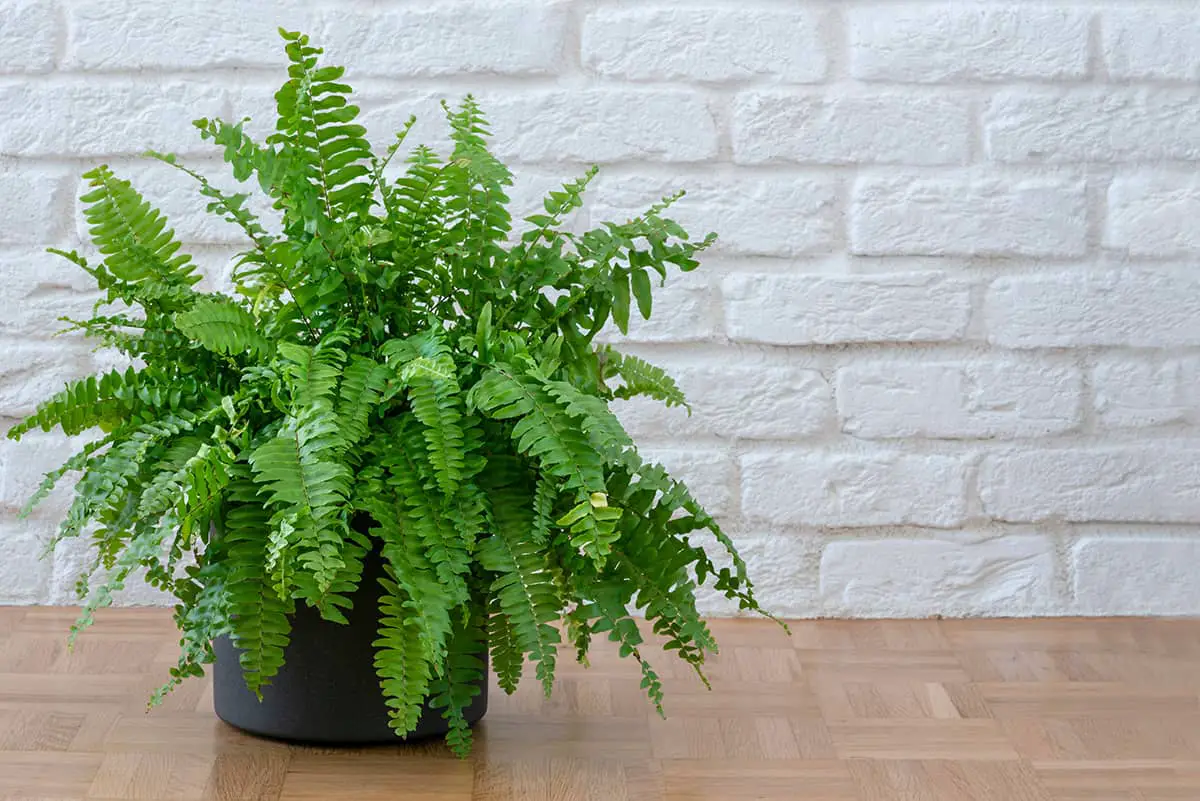
- Botanical name: Nephrolepis exaltata
- Common names: Boston Fern, Ladder Fern, Sword Fern
- Plant family: Lomariopsidaceae
- USDA hardiness zone: 8 – 12
- Mature height: 2 to 3 feet
- Mature spread: 2 to 3 feet
The Boston Fern is native to Central America and South America and is commonly grown as a houseplant in cooler western climates. It is a fast-growing plant that creates a lush mound of tropical-looking, feathery green foliage. It works well as ground cover but can also be kept in hanging baskets, containers, and borders.
The Boston Fern thrives in moist, well-draining soils and should be grown in full or partial shade when kept outside or in medium indirect light when grown indoors.
Sensitive Fern
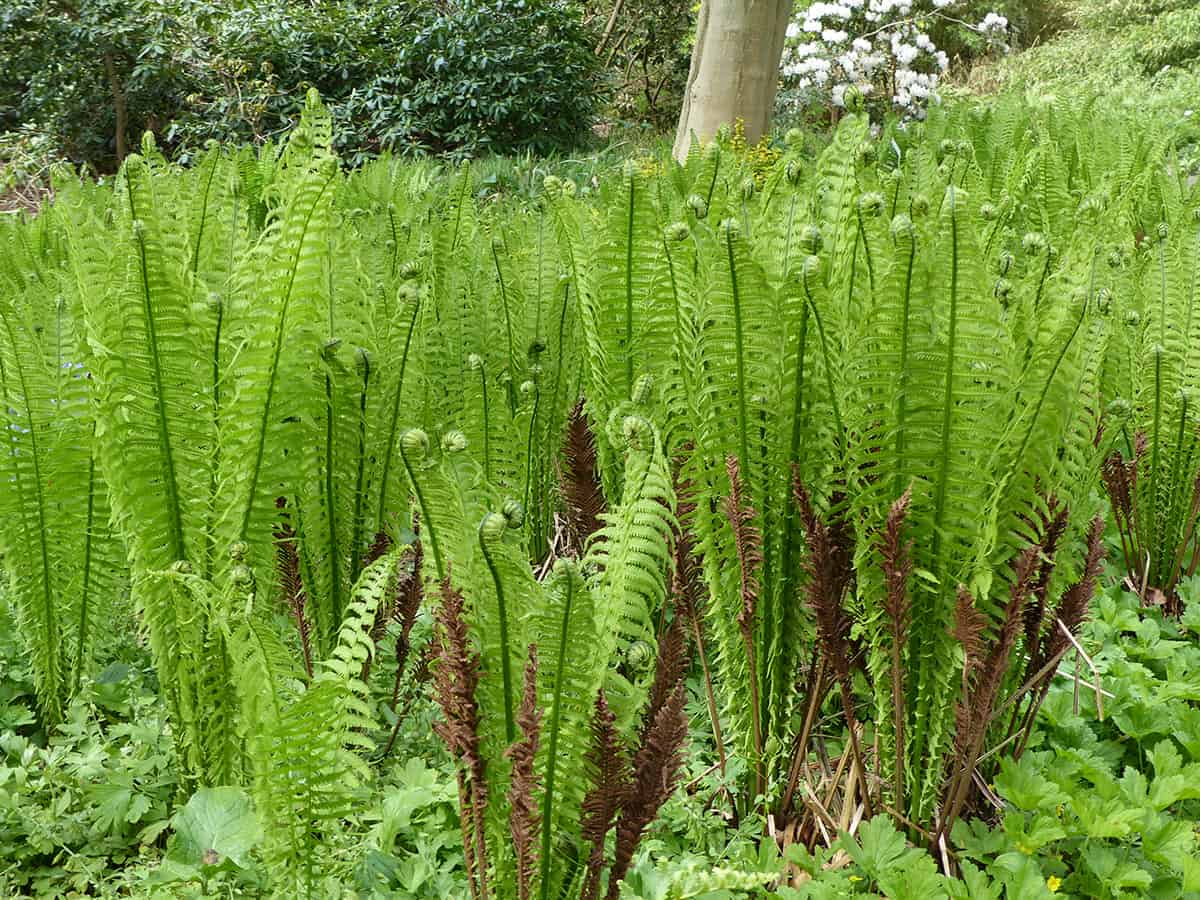
- Botanical name: Onoclea sensibilis
- Common names: Sensitive Fern, Sympathy Fern
- Plant family: Onocleaceae
- USDA hardiness zone: 4 – 9
- Mature height: 3 to 4 feet
- Mature spread: 3 to 4 feet
The Sensitive Fern is named after the reaction of the plant to frost, as it will quickly die in the presence of frost. It produces large, leathery fronds in a blue-green color, which can span up to 4 feet in length.
It grows easily in moist to wet conditions, in full or part shade. Cut and dried fronds from the Sensitive Fern are popularly used in flower arrangements.
Giant Sword Fern

- Botanical name: Nephrolepis biserrata
- Common names: Giant Sword Fern, Western Sword Fern,
- Plant family: Dryopteridaceae
- USDA hardiness zone: 10 – 11
- Mature height: Up to 8 feet
- Mature spread: Up to 4 feet
The Giant Sword Fern is native to the Americas, where it grows mostly in swamp land. It is a tropical, evergreen plant that produces long fronds of up to 8 feet in length, standing upright or in a gently arching shape. It thrives in full to partial shade and moist soils, though it can tolerate short periods of drought.
Cinnamon Fern
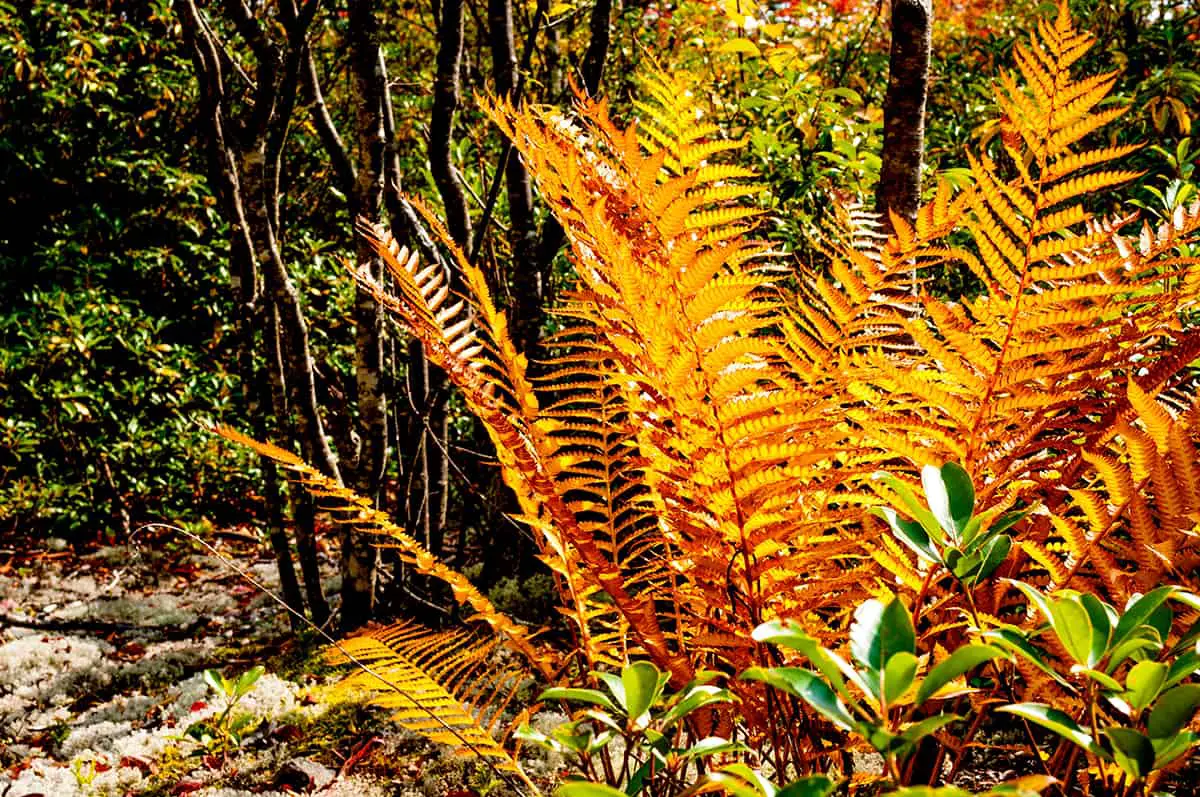
- Botanical name: Osmunda cinnamomea
- Common names: Cinnamon Fern
- Plant family: Osmundaceae
- USDA hardiness zone: 4 – 10
- Mature height: Up to 5 feet
- Mature spread: Up to 3 feet
This fern is native to the Americas, where it is found growing along riversides and in boggy environments. It is named after the fertile spore-producing spikes which emerge from the middle of the plant and have a strong resemblance to cinnamon sticks.
The sterile fronds are bright green and spread outwards to form a lush rosette of foliage. This plant should be grown in consistently moist to wet soils, and it prefers light, dappled shade. If grown submerged in water, it can tolerate full sun.
Interrupted Fern
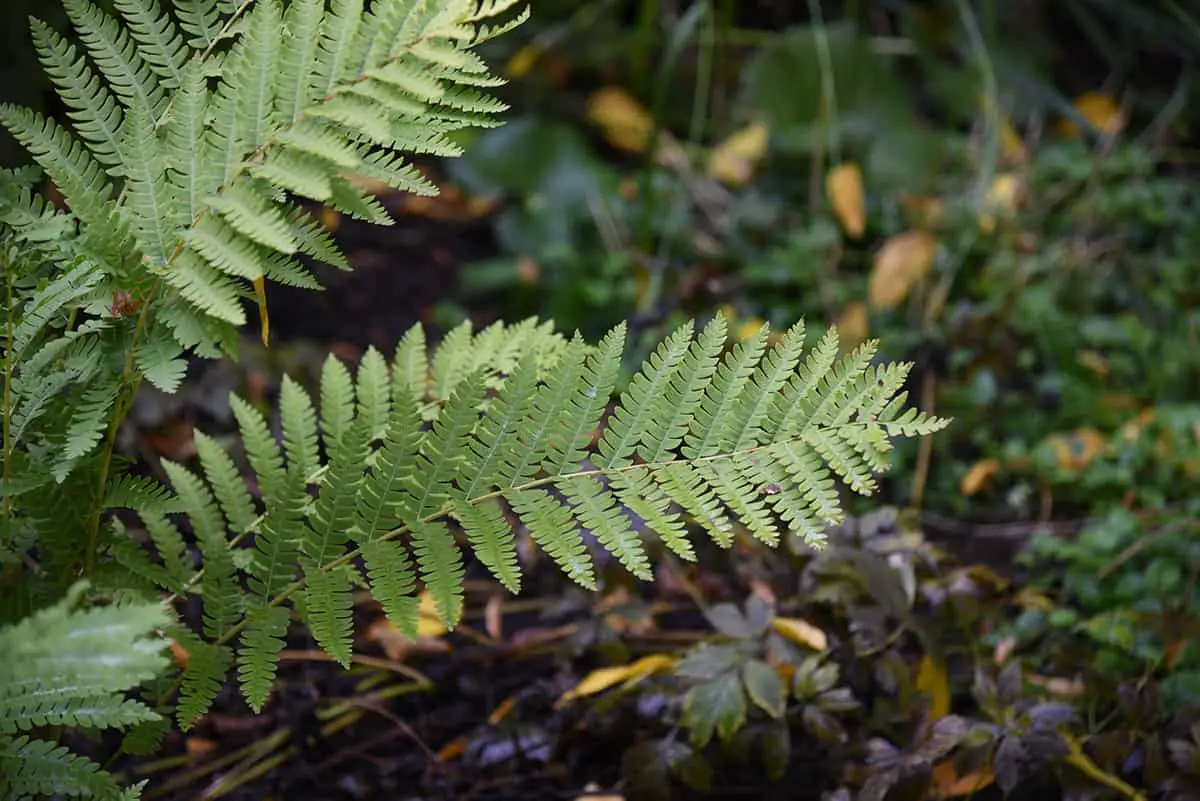
- Botanical name: Osmunda claytoniana
- Common names: Interrupted Fern
- Plant family: Osmundaceae
- USDA hardiness zone: 3 – 8
- Mature height: Up to 3 feet
- Mature spread: Up to 3 feet
This is a deciduous fern native to eastern Canada, the eastern United States, and east Asia. It produces upright fronds which gently arc outwards to form an overall vase shape.
The outer fronds are sterile, while the fertile fronds are sent up from the middle of the plant. The Interrupted Fern thrives in full to part shade, with consistent moisture in a well-draining soil. Full sun will be tolerated with adequate moisture.
Broad Beech Fern
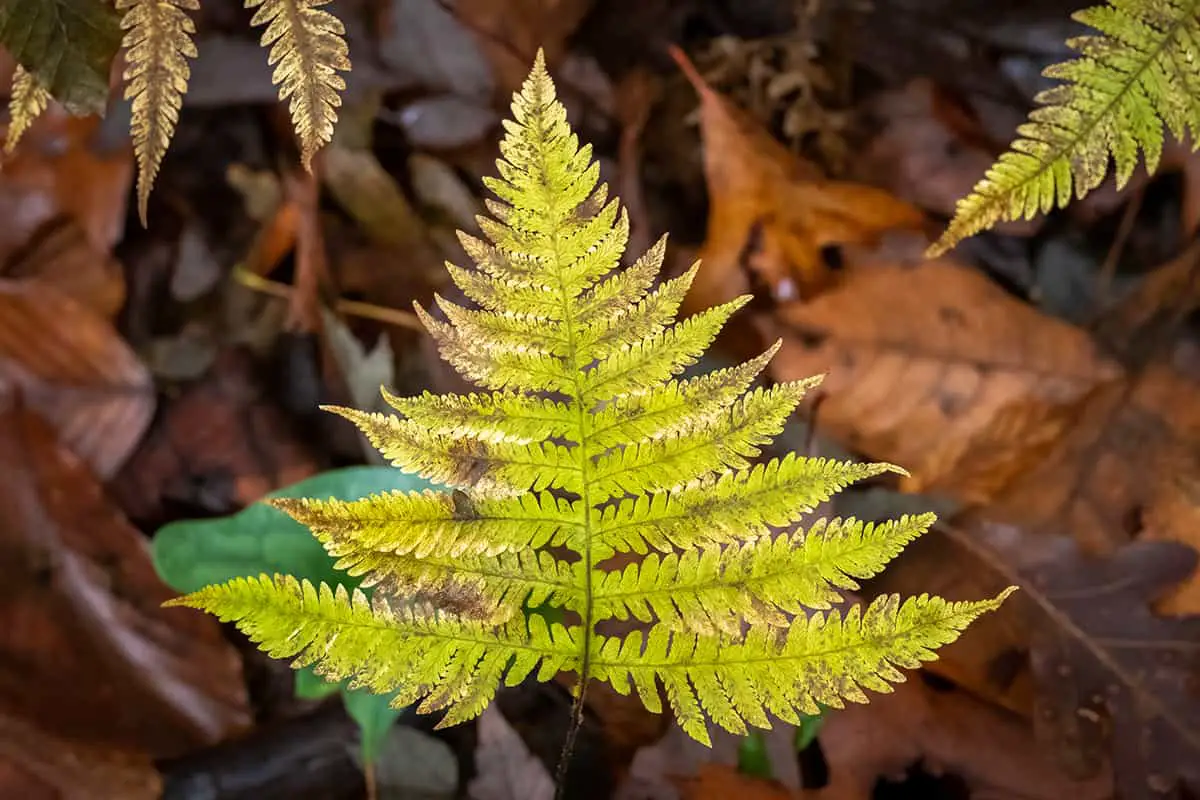
- Botanical name: Phegopteris hexagonoptera
- Common names: Broad Beech Fern
- Plant family: Thelypteridaceae
- USDA hardiness zone: 5 – 9
- Mature height: 1 to 2 feet
- Mature spread: 1 to 2 feet
This is a type of forest fern which grows natively in North America and is commonly found in the woodlands of Ontario in Canada. It is a deciduous plant that produces faded green fronds with small hairs on the undersides.
Both the sterile and fertile fronds of this plant appear very similar, and they will fade to yellow in the fall before dying back. The plant grows well in partial or fully shaded conditions, in moist, well-draining soil.
Licorice Fern
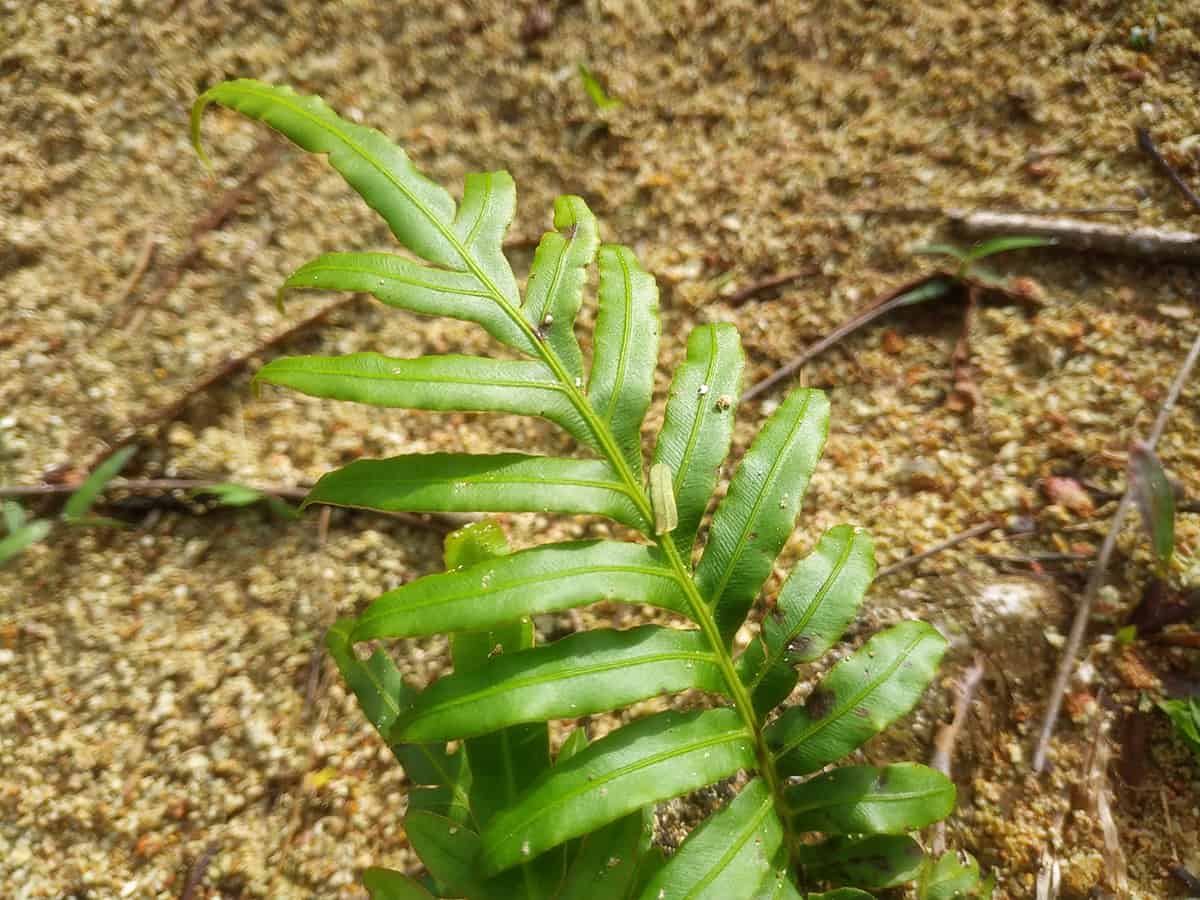
- Botanical name: Polypodium glycyrrhiza
- Common names: Licorice Fern, Sweet Root, Many-Footed Fern
- Plant family: Polypodiaceae
- USDA hardiness zone: 4 – 9
- Mature height: Up to 1 foot
- Mature spread: Up to 2 feet
The Licorice Fern is a type of epiphytic fern that will grow on the surface of rocks and trees in its natural habitat, but it also grows well in soil and can make a good choice of plant for ground cover. It is semi-evergreen, and its native to the west coast of North America. It is named after its rhizomatous roots, which are said to have a licorice flavor.
The roots were chewed for their taste by Native Americans and also used as a medicine for colds and sore throats. It produces clumps of dark green fronds which can reach up to 1 foot in length. The Licorice Fern prefers partial to full shade and can tolerate a range of soils that are kept consistently moist.
